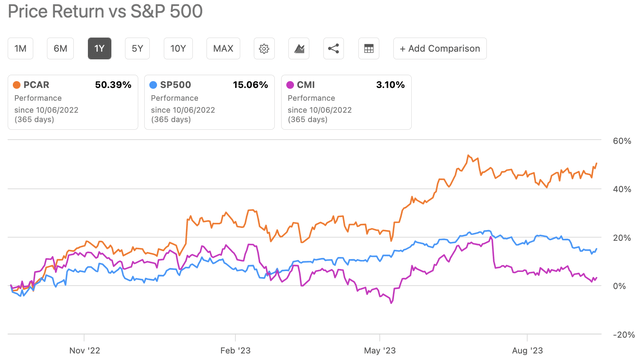J.M. Smucker and Mondelez are consumer staples companies with similar financial performance. Both companies compete in similar product categories, especially when it relates to snacks. But, Mondelez has a vast international operation, while J. M. Smucker is more focused on the U.S. with very little So, I wanted to see if the mean daily returns are the same between the two stocks.
First, I downloaded the daily price return data for the past six months for both J.M. Smucker (SJM) and Mondelez (MDLZ) from IEX Cloud.
I did a correlation between the daily price returns of the two companies using R:
> cor(SJM_6Month_ClosingPrice_Daily_Return_Data$changePercent, MDLZ_6Month_ClosingPrice_Daily_Return_Data$changePercent)
[1] 0.5815403
The correlation in the daily returns between the two companies was 0.58 for the past six months. It is a positive correlation, but I would not consider this as a strong correlation in returns between the two companies. I would consider it a strong correlation if it was at or above 0.70. This came as a surprise given that both the companies are in the consumer staples sector and that sector has performed very well since December 2021.
Next, I wanted to calculate the p-value for the Welch two-sample t-test between means of the daily returns. The null hypothesis is that the difference in mean daily returns between J.M. Smucker and Mondelez is zero. The alternate hypothesis is that the difference is not zero. The p-value is 0.9035, which means the null hypothesis can be resoundingly rejected. The t-test command in R and the result set is presented below. The J. M. Smucker had a mean daily return of 0.0893% and Mondelez had a daily return of 0.0717%. There is a 1.7 basis points difference in returns with J. M. Smucker having a slightly larger daily return than Mondelez.
> t.test(SJM_6Month_ClosingPrice_Daily_Return_Data$changePercent, MDLZ_6Month_ClosingPrice_Daily_Return_Data$changePercent)
Welch Two Sample t-test
data: SJM_6Month_ClosingPrice_Daily_Return_Data$changePercent and MDLZ_6Month_ClosingPrice_Daily_Return_Data$changePercent
t = 0.1214, df = 239.4, p-value = 0.9035
alternative hypothesis: true difference in means is not equal to 0
95 percent confidence interval:
-0.002682718 0.003035099
sample estimates:
mean of x mean of y
0.0008936508 0.0007174603
Finally, here's the scatter plot of daily price change of J.M. Smucker (SJM) and Mondelez (MDLZ).
(Data Source: IEXCloud.io, Plot Created using RStudio)

![Monthly Returns of Sealed Air Corp. and Vanguard S&P 500 Index ETF [June 2019 - August 2022] Monthly Returns of Sealed Air Corp. and Vanguard S&P 500 Index ETF [June 2019 - August 2022]](https://blogger.googleusercontent.com/img/b/R29vZ2xl/AVvXsEiSotWsT6tTgW3luCt3iEODsOGn6pJipMggQ7pPQGYBcAlf4iKukfkRVUeQTsczXHCcnq-UB_KpqWfO6NICzwZRHWTbICKW2ksTSfIdmfzWYYUIr90GSUdM-1qhnJEvdLRNsVhDXAAWzyOGc9w6Z_eA8TH0eMf13oaLwvQubU0-3lrLsvAe2sv0F7lu/w400-h315/Rplot01.jpeg)











